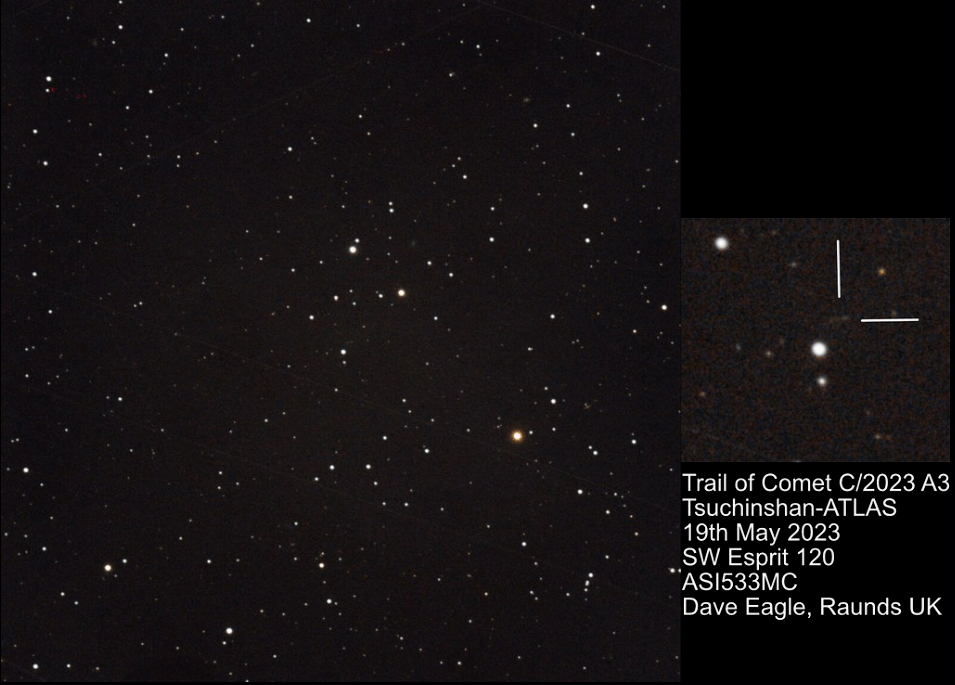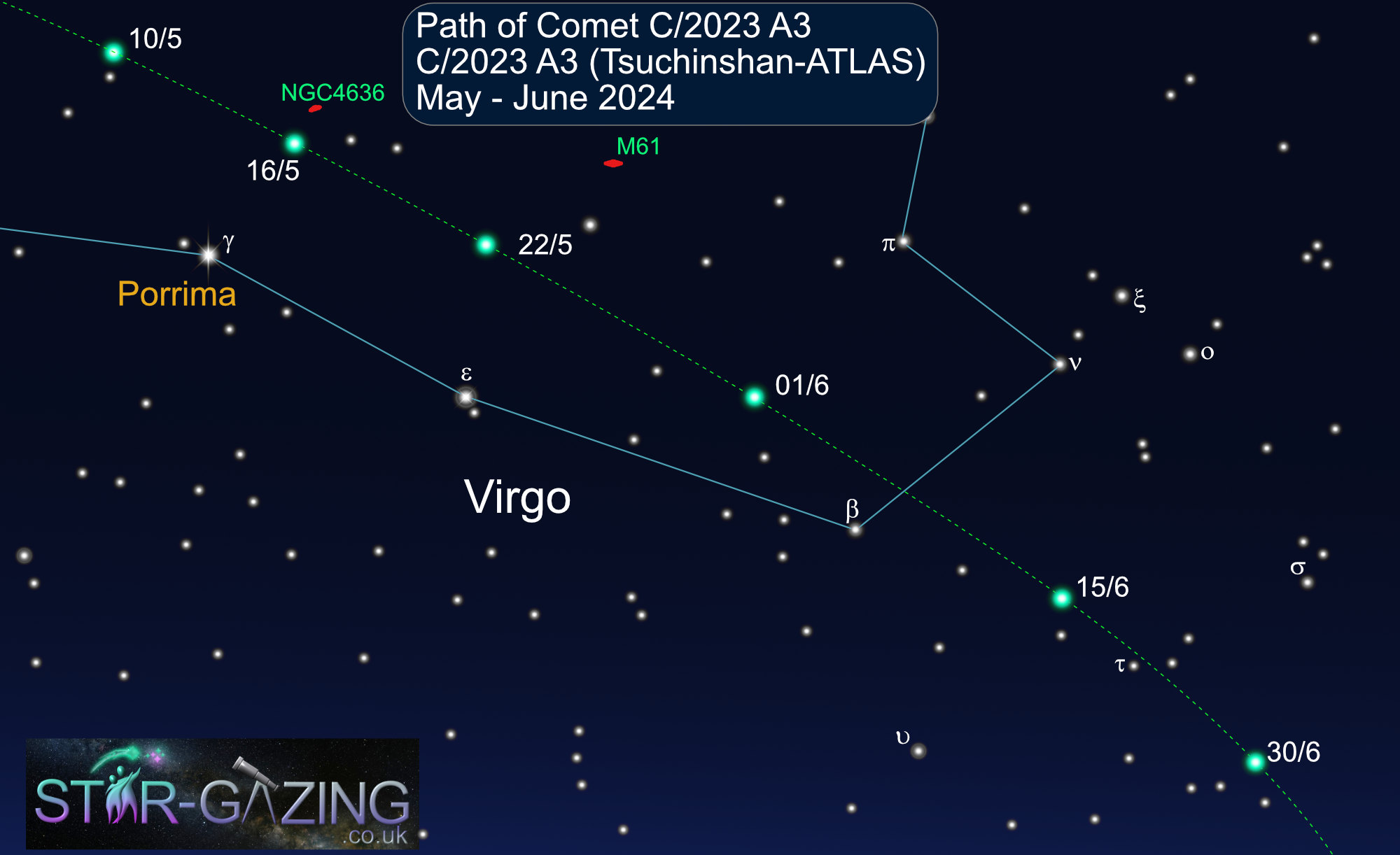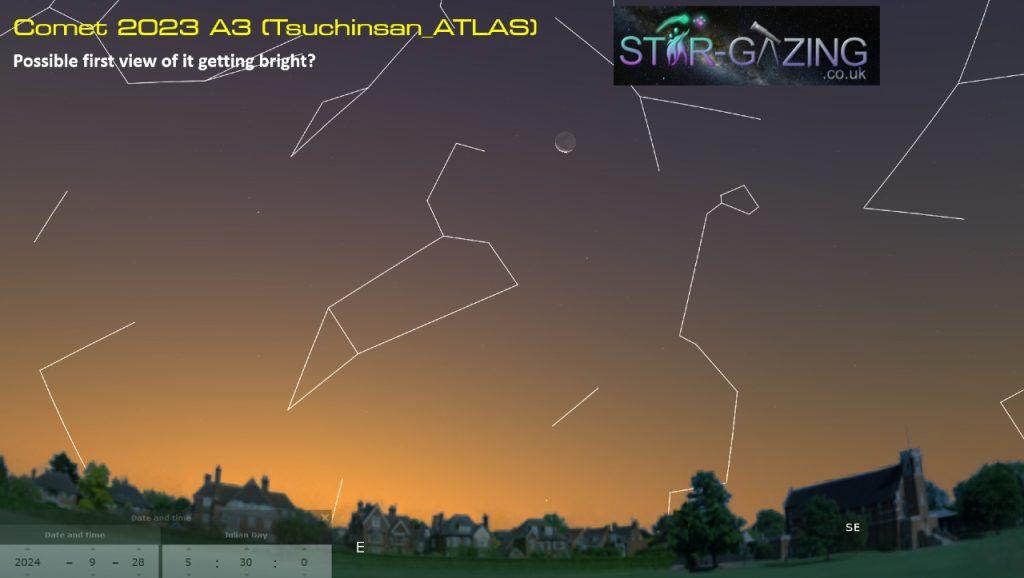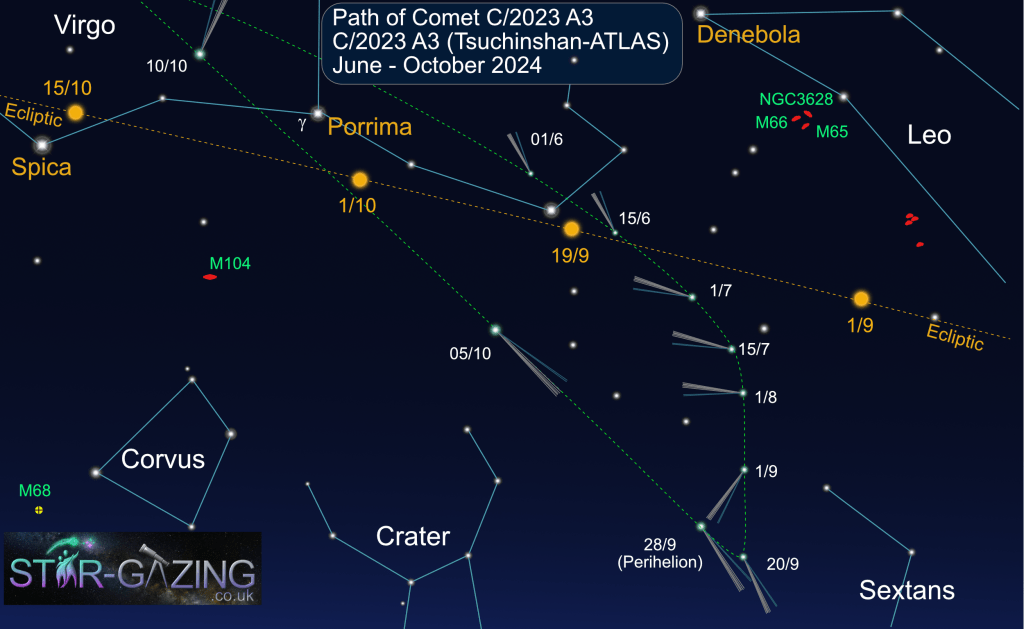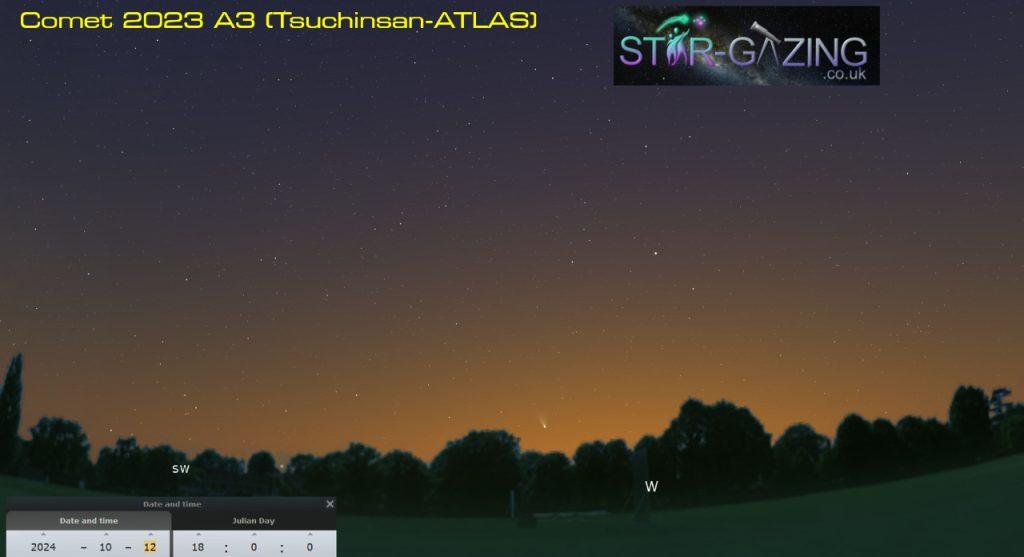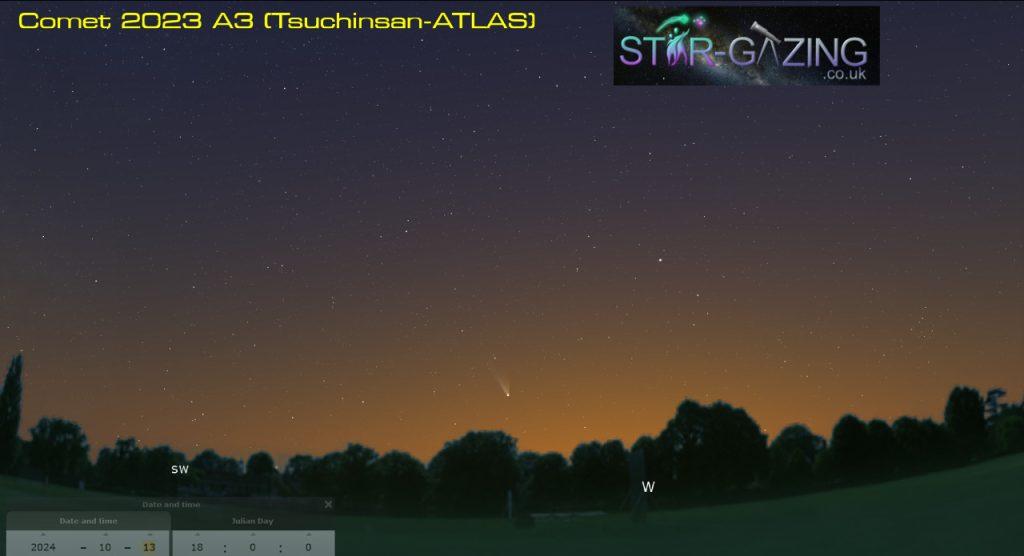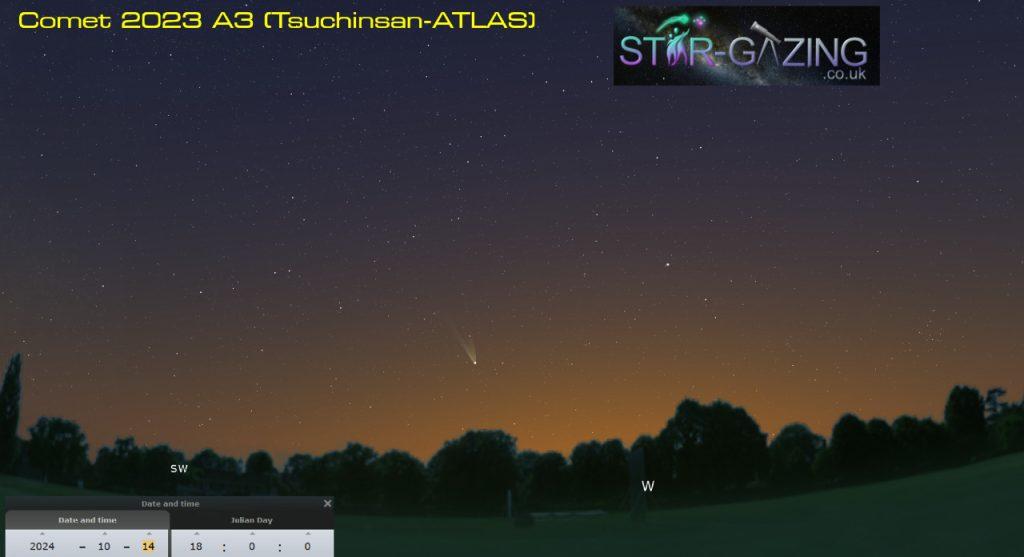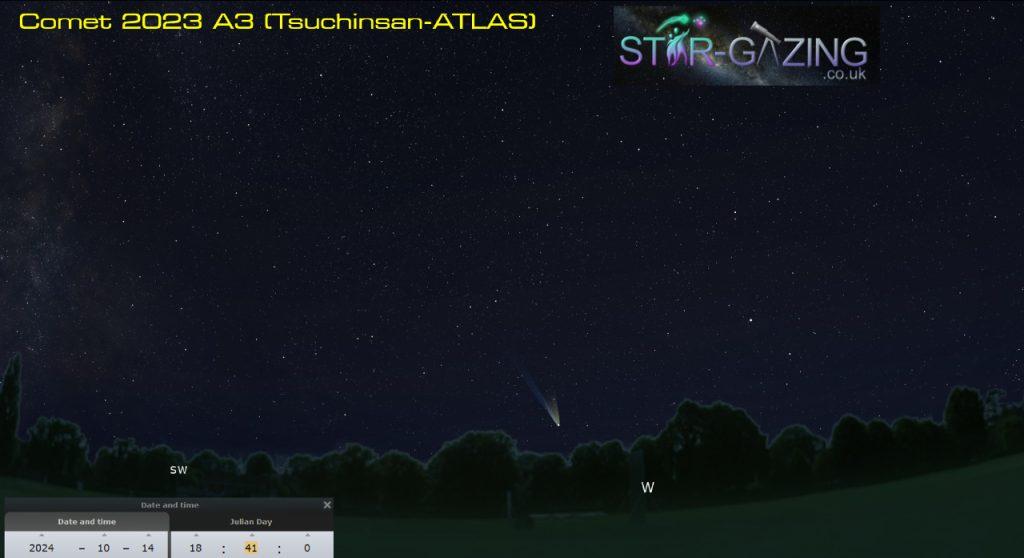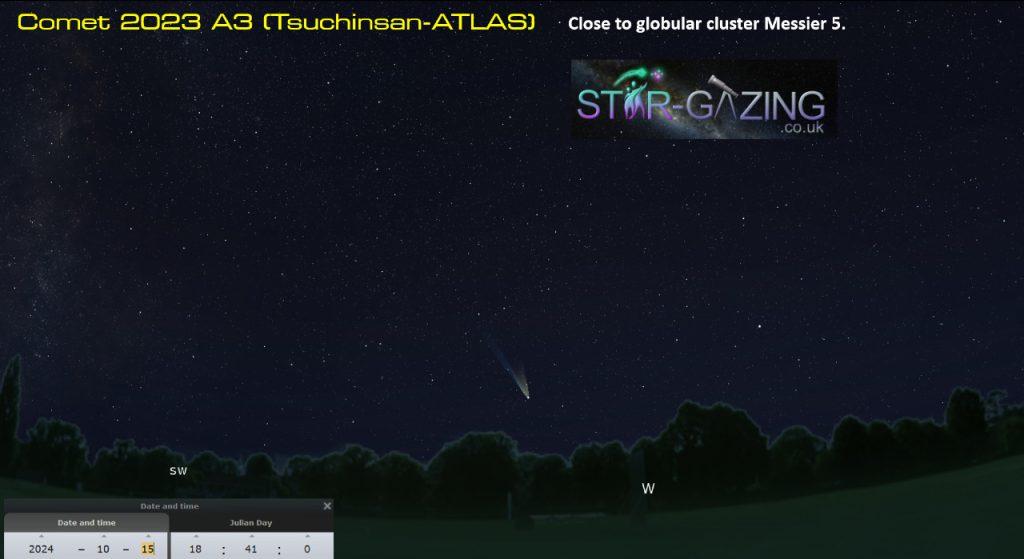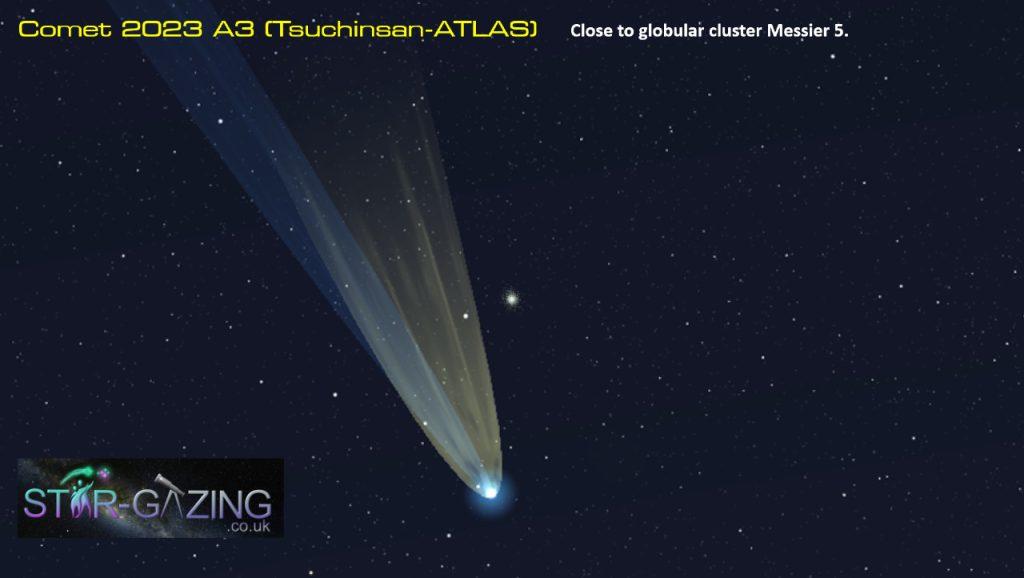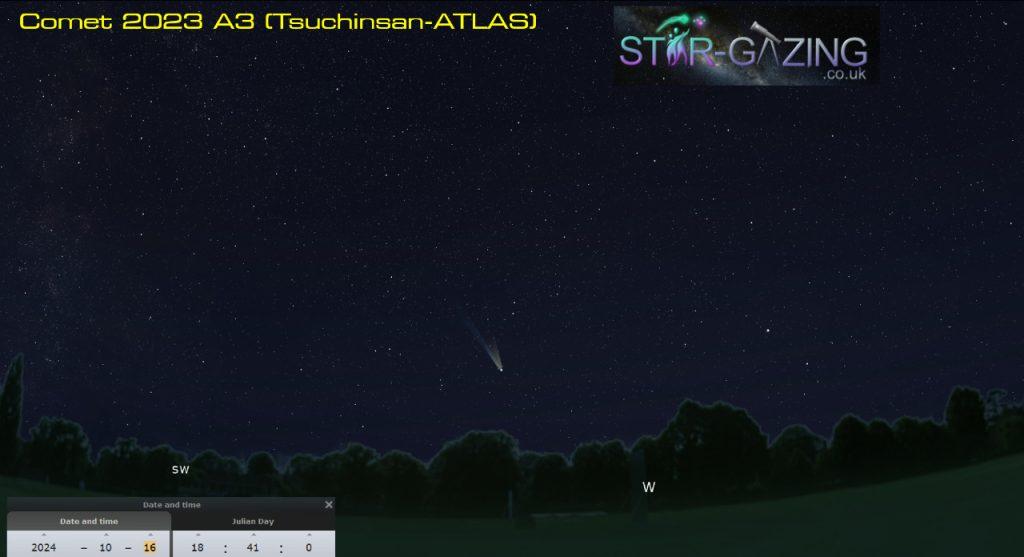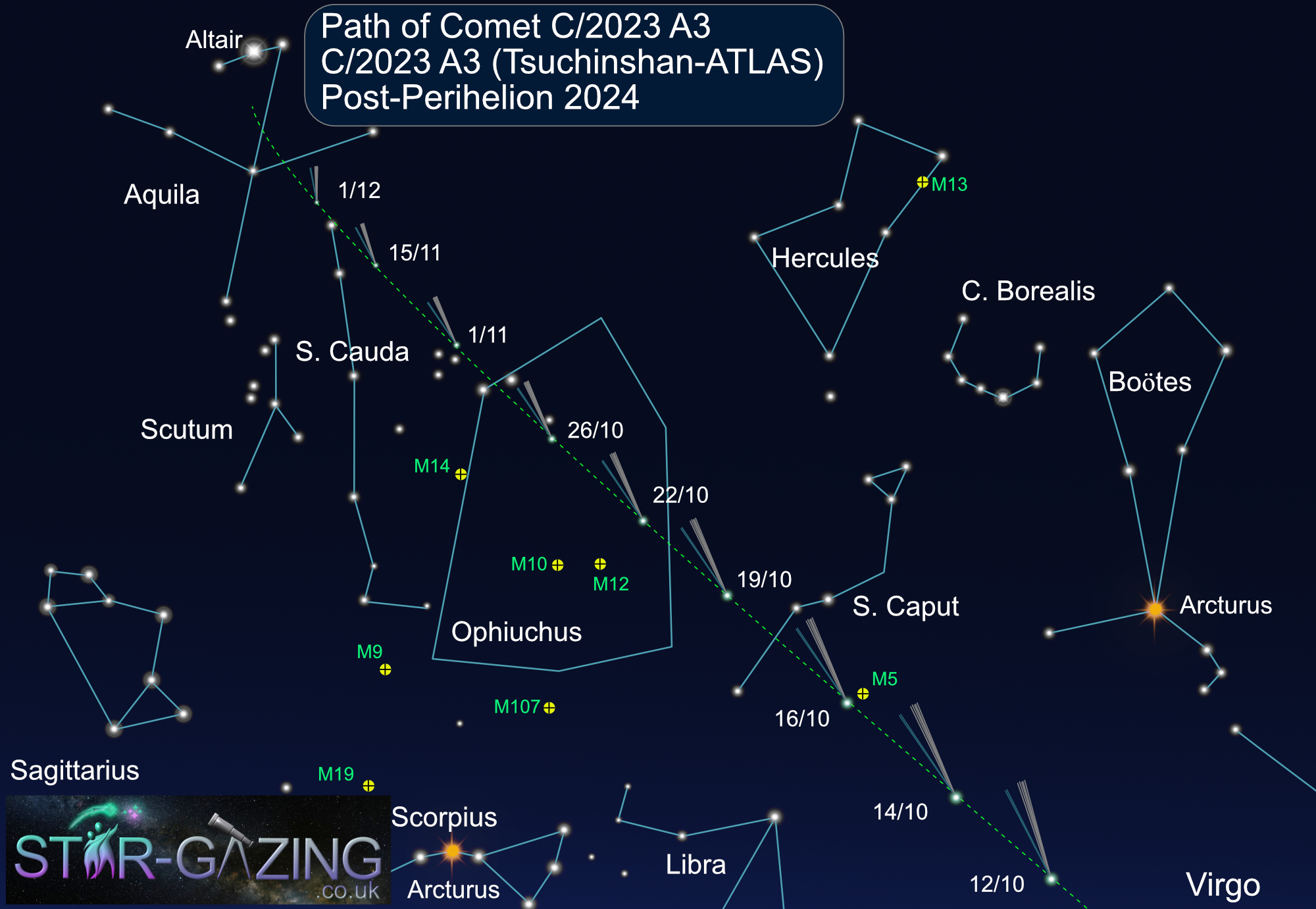To keep up to date with events, download and install the TeamUp Sky Diary and carry it about on your phone:
https://www.star-gazing.co.uk/WebPage/sky-diary
We could be in for a real treat next year.
This is Comet C/2023 A3 (Tsuchinsan-ATLAS).
It will not be visible until the autumn, but if predictions are correct (Yeah Right!!!) the position of the comet relative to The Sun after perihelion has the potential to make it a nice bright comet.
As the comet is between The Earth and The Sun when at its best in October, this could make it extremely bright.
I added the ephemerides into Stellarium to produce some of the following diagrams.
My guide on how to do this is here: https://youtu.be/6-7HgYFl0tY
I managed to image it as small, faint trail on the 19th May 2023.
At the start of January, the comet is moving eastwards in Libra and should be about 14th magnitude.
It loops around and starts moving westwards by the 8th of February.
Update 10th April 2024.
It is now around 12th magnitude, so brightening well, and is definitely looks like a comet now.
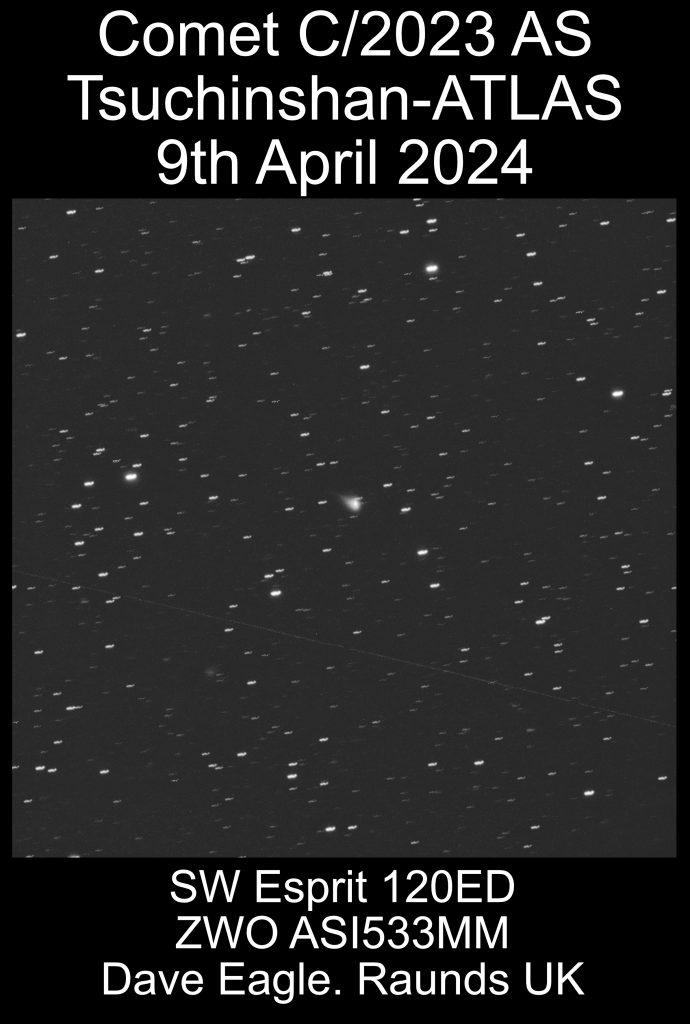
On the 23rd of March the comet enters Virgo, where it spend the rest of the summer, moving slowly through the constellation, gradually brightening as it approaches the inner solar system.
It passes close to the +3.88 magnitude Mu Virginis on the 24th of March and close to the 3rd magnitude star Virginis on the 27th of April. The magnitude of the comet could now have brightened to about tenth magnitude.
The map below shows the path of the comet in Libra an Virgo from January to May.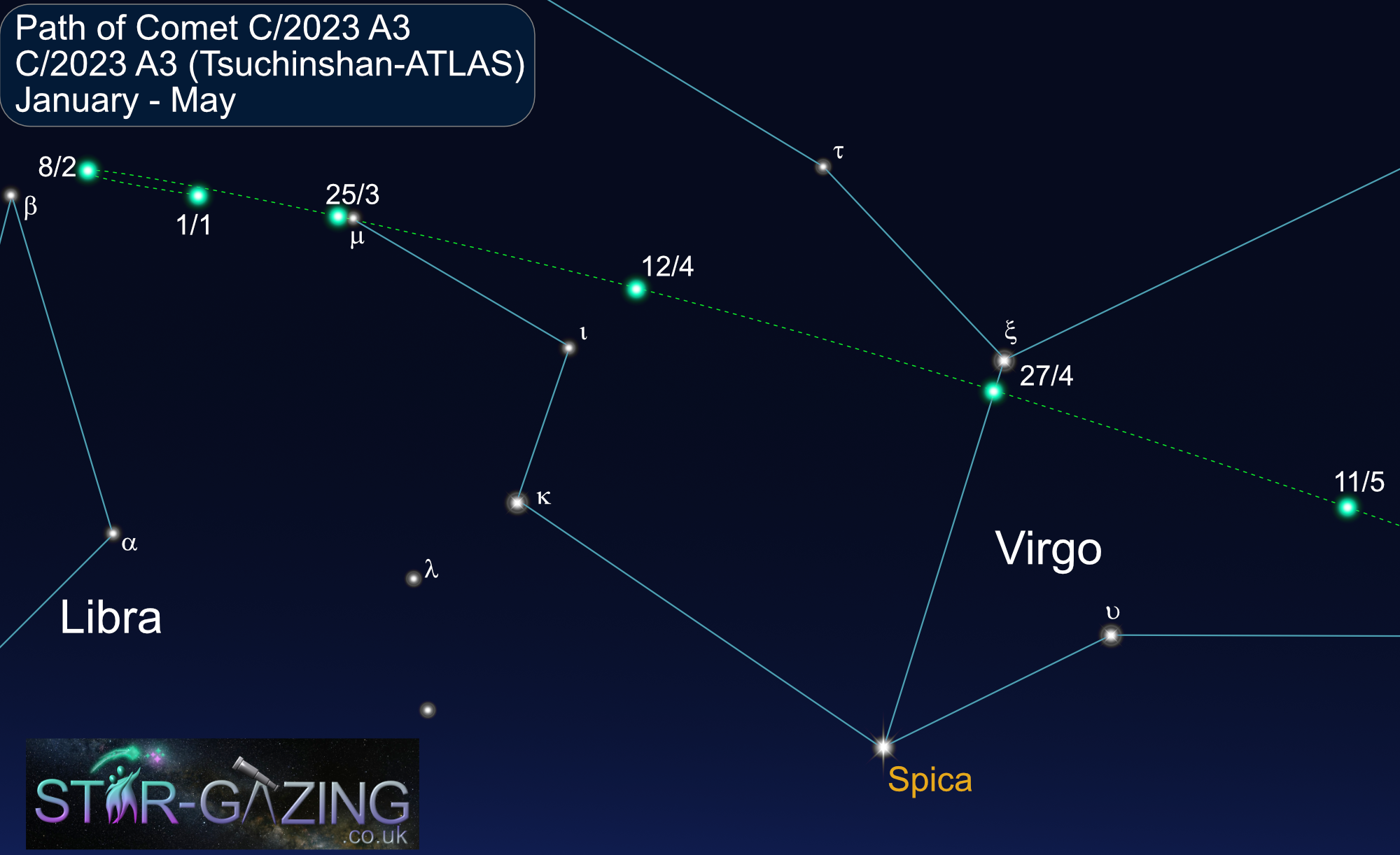
On the 15th of May the comet passes close to the galaxy NGC4636.
By the end of May, the comet is now starting to approach The Sun.
The 1st Quarter Moon passes close to the comet on the 13th of June.
As we get into June and it is really starting to brighten, the comet will now be low in the south western twilight after sunset.
The comet now becomes more difficult to spot as it slides into the Sun’s glare and is soon lost in the bright evening twilight in the south western sky. We are now unlikely to see it (briefly) until around the 28th of September.
The image below shows it as a small bright spot, only a few degrees above the western horizon just before dawn on the 28th of September, when the comet is just past perihelion (Closest to The Sun).
As the comet is on the other side of The Sun, if it has developed a tail at this time it will probably be pointed away from us so we are unlikely to see much of it.
We’ll need to wait a couple of weeks for the comet to move away from The Sun, when it reappears in the evening western twilight.
The map below shows how the comet rounds The Sun, but this will not be visible from Earth as the comet will be too close to The Sun.
Notice how the direction of the tail changes as it rounds The Sun. The Position of The Sun along the ecliptic at this time is also plotted.
Around the time of perihelion, the comet could reach a magnitude of -3 or -4. Opinions do vary. Well, it is a comet after all.
The only way to see how bright it is is to get out and see it when we can.
It will still be fairly close to The Sun at this time and unlikely to be seen.
But if it does reach that magnitude, it may just be visible in a daytime sky if tracked down with extreme care.
Once the comet passes perihelion we’ll get our best chance to view it from the 11th or 12th of October, when it moves into the western evening sky.
On the 12th, at about 18:00 UT, the comet is low in the twilight after sunset and sets very quickly after The Sun, but could now have developed a reasonable tail. Depending on how bright and long that tail is, we may still be able to see it once the comet itself has set (Fingers crossed).
The next evening 13th of October, the comet is a little bit higher in the sky and sets slightly later.
How bright will the comet be at this time? It will have faded, but could still be about 1st magnitude object.
The comet is now at its closest to The Earth passing us at a distance of 44,618,787 miles.
On the 14th of October the comet is quite a bit higher in the sky, so we can observe it a later time when the sky will be a bit darker, so you should be able to see more faint features in the comet and any tail.
The comet is passing almost between us and The Sun, so sunlight will be illuminating the dust and gas around the comet potentially making it extremely bright.
The images below show the comet at 18:00 UT, and 18:41 (when the sky will be darker) on the 14th of October.
On the evening of the 15th, the comet should now be starting to fade, but is even higher in the sky.
This evening it is passing close to the globular cluster Messier 5, which should give us a great photographic opportunity. 🤞
By the 15th of October, the comet has moved well up in the western evening sky and is now moving through Serpens Caput and should have noticeably faded.
This final image shows the path and position of the comet between the 14th and 27th of October from Virgo to Ophiuchus, and on into Aquila in late December, where we should be able to follow it as it moves out from the inner solar system and fades away.
I for one, will be very interested in following this comet over the coming months to see it starting to brighten and keeping the faith that it does give us a great display mid October.
The only way to know for sure, is to KEEP LOOKING UP!
Dave

